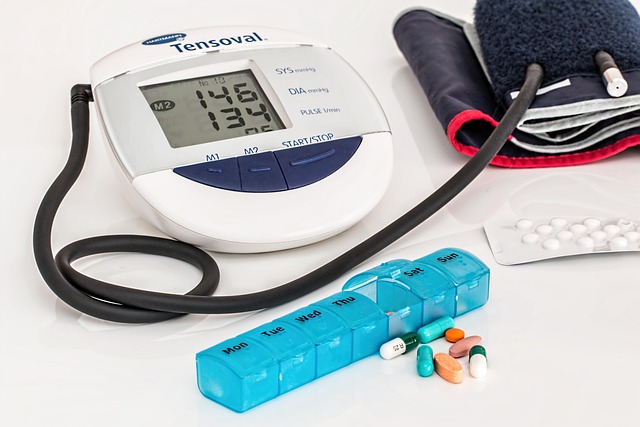Discover the Future of Dental Implants: Screwless Solutions
If you've been considering dental implants but are concerned about cost, screwless dental implants are an option to discuss with your dentist. These designs can simplify certain clinical steps, potentially reduce chair time and component complexity, and may be associated with different maintenance needs compared with traditional implants. Clinical suitability, long-term outcomes and total costs vary by patient; consult a qualified dental professional for personalized information.

Modern dental technology continues to push boundaries, offering patients more comfortable and effective solutions for tooth replacement. Screwless dental implants have emerged as an innovative alternative to conventional implant systems, addressing some of the limitations associated with traditional screw-retained restorations. These advancements reflect ongoing efforts within the dental industry to improve patient experiences while maintaining the durability and functionality that implants are known for.
What Are Screwless Dental Implants?
Screwless dental implants represent a departure from traditional implant design by eliminating the need for a retaining screw to attach the prosthetic crown to the implant fixture. Instead of threading a screw through the crown and into the implant body, these systems use alternative retention mechanisms such as cement bonding, friction-fit connections, or specialized locking systems. The implant fixture itself still integrates with the jawbone through osseointegration, but the method of attaching the visible restoration differs fundamentally from conventional approaches. This design modification aims to reduce mechanical complications and simplify the restoration process while maintaining structural integrity.
Why Are Screwless Implants Becoming a Popular Choice?
The growing interest in screwless implant systems stems from several practical advantages they offer over traditional screw-retained designs. One primary concern with conventional implants is the potential for screw loosening over time, which can lead to discomfort, instability, and the need for maintenance appointments. Screwless designs eliminate this particular failure point entirely. Additionally, the absence of a screw access hole in the crown allows for more natural-looking restorations with improved aesthetics, particularly for front teeth where appearance matters most. Patients and dentists alike appreciate the reduced complexity during the restoration phase, as cement-retained or friction-fit crowns can often be placed more quickly and with fewer technical challenges than their screw-retained counterparts.
How Do Screwless Implants Work?
The mechanism behind screwless dental implants varies depending on the specific system used. Cement-retained implants feature an abutment that is first secured to the implant fixture, followed by the crown being cemented onto this abutment using dental cement, much like a traditional crown on a natural tooth. Friction-fit systems rely on precise manufacturing tolerances to create a tight mechanical connection between components without screws or cement. Some newer designs incorporate magnetic attachments or proprietary locking mechanisms that snap into place. Regardless of the specific technology employed, the underlying implant still requires surgical placement into the jawbone and a healing period for osseointegration to occur. The key difference lies entirely in how the final restoration attaches to the implant once healing is complete.
The Key Benefits of Screwless Dental Implants
Screwless implant systems offer several compelling advantages that contribute to their increasing adoption. The elimination of screw access holes results in crowns with superior aesthetics, as there are no visible openings that need to be filled with composite material. This creates a more natural appearance that closely mimics real teeth. From a mechanical standpoint, removing the screw as a potential point of failure can enhance long-term reliability, though the cement or retention mechanism introduces its own considerations. Many patients find the restoration process less invasive and more straightforward, as adjustments and final placement can often be accomplished with less chair time. The simplified design may also reduce the overall cost of components in some cases, though this varies by system and provider.
Cost Considerations and Provider Comparisons
When considering screwless dental implants in the United Kingdom, understanding the financial investment is essential for making informed decisions. Pricing for dental implants can vary significantly based on location, provider experience, materials used, and the complexity of individual cases. Screwless systems may carry different costs compared to traditional screw-retained implants, depending on the specific technology and components involved.
| Provider Type | Service Offered | Cost Estimation |
|---|---|---|
| Private Dental Practices | Single screwless implant with crown | £2,000 - £3,500 |
| Specialist Implant Clinics | Complete screwless implant treatment | £2,500 - £4,000 |
| Dental Hospitals | Screwless implant with advanced restoration | £2,200 - £3,800 |
| Multi-location Chains | Standard screwless implant package | £1,800 - £3,200 |
Prices, rates, or cost estimates mentioned in this article are based on the latest available information but may change over time. Independent research is advised before making financial decisions.
Factors influencing the final cost include preliminary procedures such as bone grafting or sinus lifts, the type of crown material selected, and whether additional teeth require treatment. Many practices offer consultation appointments where detailed treatment plans and precise quotations can be provided based on individual needs.
Are Screwless Implants Suitable for Everyone?
While screwless dental implants present numerous advantages, they may not be the ideal solution for every patient or clinical situation. Suitability depends on factors including bone quality and quantity, the location of the missing tooth, bite forces, and individual oral health status. Patients with insufficient jawbone density may require bone grafting procedures before any implant placement, regardless of the retention method used. Those with heavy bite forces or grinding habits might benefit from the retrievability of screw-retained designs, which allow for easier adjustments or repairs without destroying the restoration. Dental professionals conduct thorough assessments including clinical examinations and imaging studies to determine the most appropriate implant system for each unique case. Open communication with your dentist about expectations, lifestyle factors, and long-term maintenance preferences helps ensure the selected treatment aligns with your specific needs.
Screwless dental implant technology represents an exciting development in restorative dentistry, offering enhanced aesthetics and simplified mechanics for many patients. As with any medical procedure, thorough research and consultation with qualified dental professionals remain essential steps in achieving successful outcomes and long-lasting oral health improvements.




